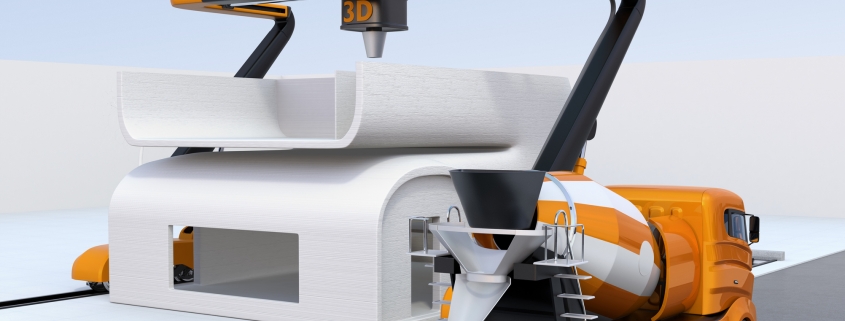What Does the Future Hold for the Construction Industry?
What does the future of technology hold for construction? Will construction eventually become autonomous, too?
It’s safe to say there will be major changes in the construction field as artificial intelligence and IoT technologies advance. Manual brick-and-mortar building will be a thing of the past. Instead, advanced automation technologies will offload tasks that used to require hundreds of hours of dangerous, back-breaking labor.
Self-Repairing Concrete
Concrete that fixes itself? Yes, it’s already in the works! This “smart” concrete would be able to seal its own cracks and prolong the life of the concrete. Why would this be useful? Concrete is the most used construction material in the world as well as the second most consumed substance on the planet, next to water. Though it’s cheap and can be used for a variety of purposes, concrete is prone to cracking under extreme heat or extreme cold. Having the technology available for the concrete to simply heal itself would keep structures stable for longer and have huge environmental benefits.
How would the concrete “heal” itself? The concrete would be embedded with tiny capsules that, upon sensing damage, would rupture and release a substance that would fill in the crack and harden. Do you think this would be a useful technology in construction?
Pollution-Filtering Bricks
Bricks have been fundamental in construction since the Industrial Revolution, a time when pollution first started to become serious. How could bricks help combat pollution? A new type of brick is in development—it would function as an air filter of sorts for the home or building. As the air filters through the brick, the brick would capture and deposit pollutants in the wall’s frame. As a result, the brick would deliver cleaner air inside the structure.
3-D Printed Houses
It seems like just about anything can be 3-D printed these days. From organs to artificial limbs, the possibilities of 3-D printing are seemingly endless. And now, the future of home building is also heading toward a 3-D printing revolution. Is 3-D printing the future of sustainable housing?
A 3-D printer would be able to build the walls and foundation of a house in a few days rather than the weeks and months it would take to build manually. It would create and print the materials off-site and then assemble the house on-site at a later date. 3-D printing not only dramatically speeds up the construction of a house, but it limits construction waste, reduces scraps, and reduces the costs associated with the transport of materials. Technology could also be developed, so 3-D printers could make houses out of sustainable, renewable materials.
3-D printing is already being used to complete full-scale construction projects.
Robotic Swarm Construction
Robotic swarm construction was inspired by the humble termite. Termites are able to work together with hundreds of other termites to build huge mud structures. However, these termites aren’t receiving instructions from anyone. They are working according to their unique, genetically programmed behavior that is imprinted upon their DNA.
This inspired robotic swarm construction, in which small robots “swarm” and work together to build a structure. As with termites, each robot would be programmed to complete a specific task and each robot would be equipped with sensors to stay out of each other’s way. Robotic swarm construction has the ability to combat labor shortages and housing shortages, perform construction quickly and safely, and prevent construction-related injuries.
What do you think about these innovative materials and new technologies? Which do you think would work best in a circular city? Comment below!
Tune into the next episode of the Prefecture Podcast to hear these topics discussed in-depth!





Leave a Reply
Want to join the discussion?Feel free to contribute!